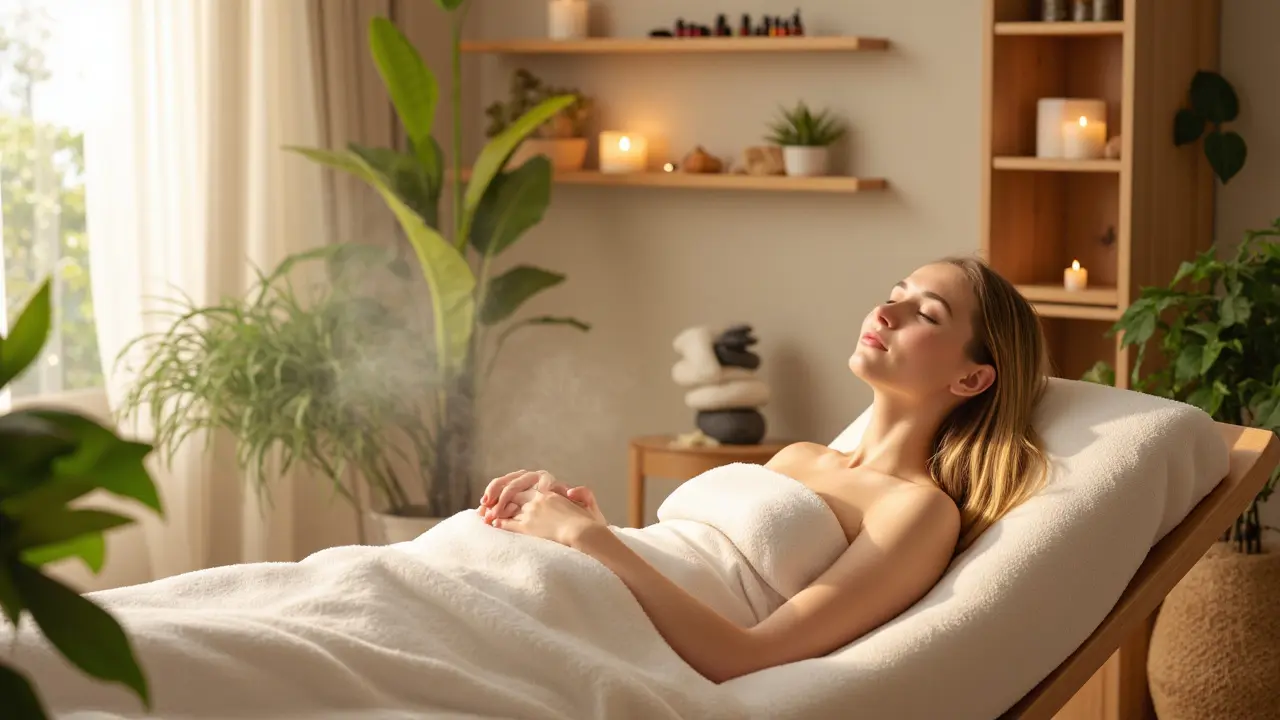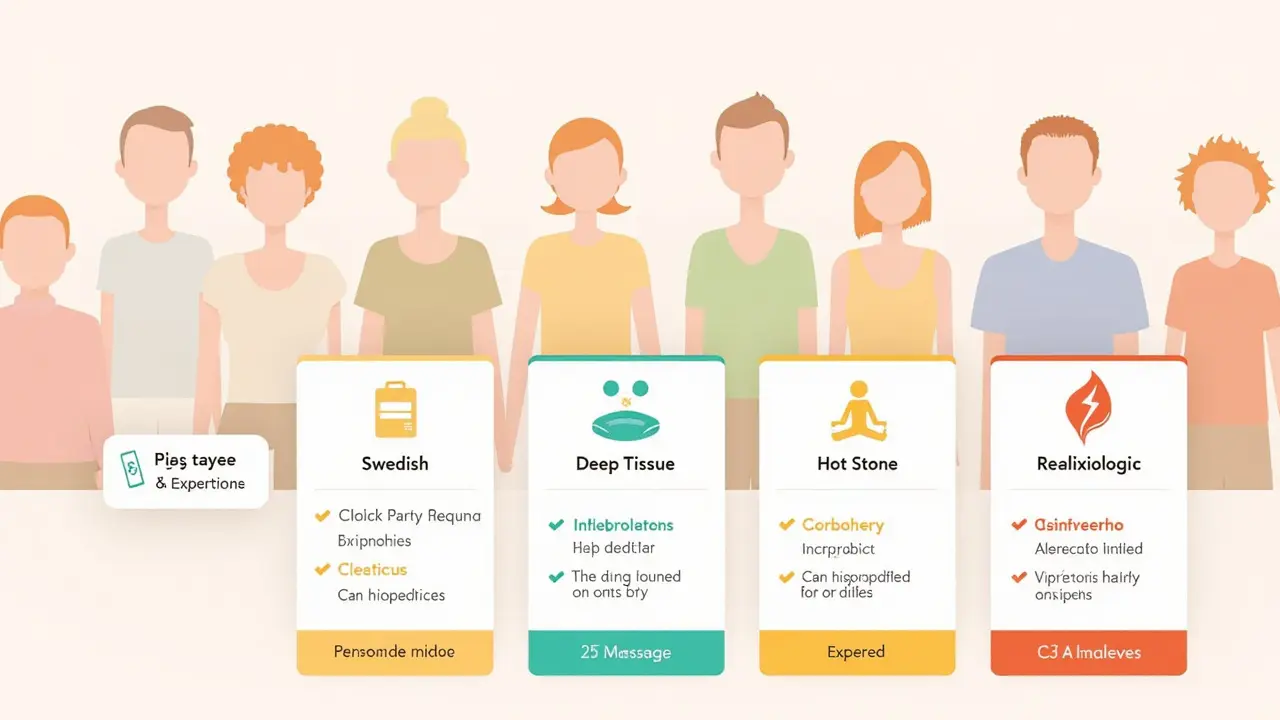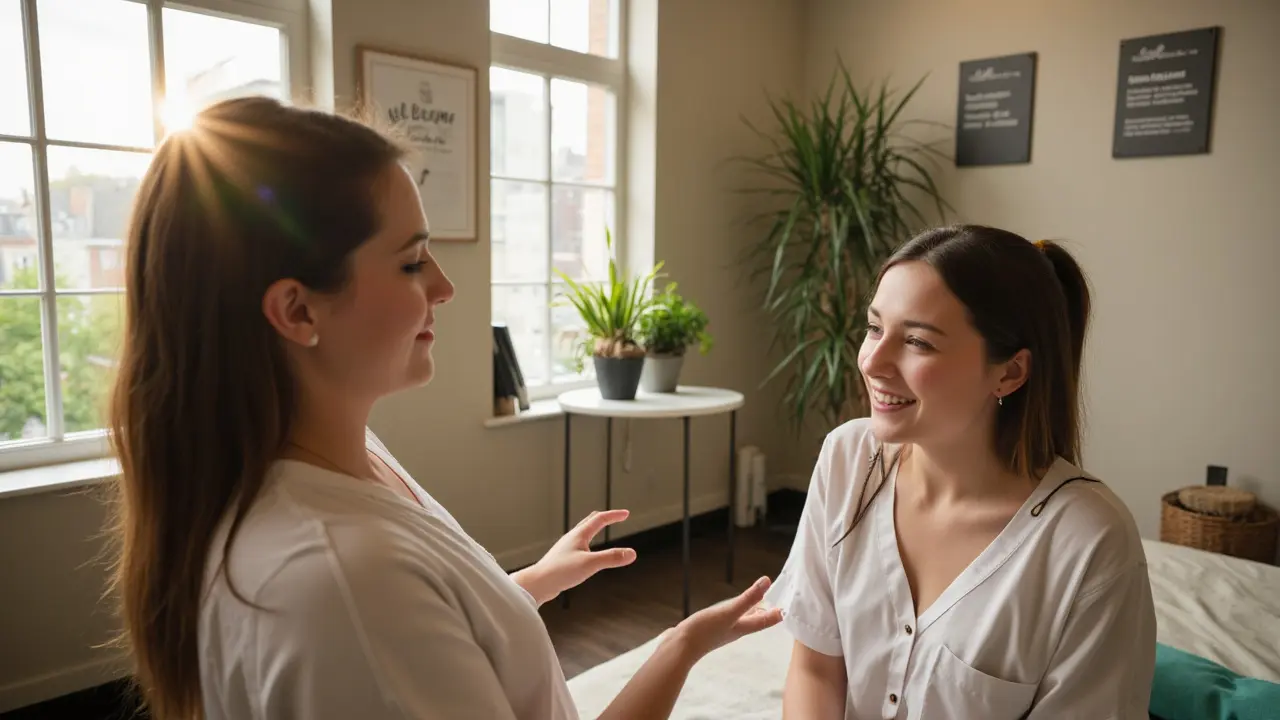
Body Massage Offers Pure Bliss for Stress Relief
Ever leave work feeling wound up tighter than a drum? Body massage isn’t just about pampering—it’s real help for stiff muscles, restless nights, and that constant feeling of being on edge. Basically, it's relaxation you can actually feel.
People always ask if massage is worth the hype. Honestly, it goes way past just feeling good. A few minutes on the table can drop your pulse, ease aches, and even clear up those stubborn tension headaches. Massage therapists know their stuff—they use simple pressure and movement to get your body to finally let go.
The best part? You don’t need to be rich or have hours to spare. Whether it’s a quick session on your lunch break or an hour-long deep dive, there’s a massage style for every body and every budget. If you’re not sure what type is right for you, no shame—most people start without a clue and end up hooked after just one visit.
- Key Reasons Body Massage Feels Amazing
- Types of Massage and What They Do
- Finding the Right Massage Therapist Near You
- What a Session Actually Feels Like
- Booking, Costs, and Safety Tips
Key Reasons Body Massage Feels Amazing
You don’t need to be a scientist to notice that a body massage makes you feel better almost instantly. But let’s get real about what’s actually happening. It’s not just in your head—your body releases feel-good chemicals like endorphins and serotonin during a massage. That’s your brain’s natural way of hitting the chill button.
A good massage does more than just relax you. It literally untangles the knots in your muscles. When you’re stressed, muscles tense up. Massage therapists use pressure, stretching, and kneading to loosen them, so blood flows better and stiffness fades away. This helps you recover after a tough workout or a bad night’s sleep.
Check out what else happens while you’re on the table:
- Your heart rate drops, which keeps your mind from racing.
- Cortisol—the stress hormone—goes down, making you less likely to snap at little things later in the day.
- Your immune system gets a boost, so you’re less likely to catch the next bug going around.
- Pain levels go down, especially for people with back or neck problems.
Peep this table to see some quick stats on massage benefits reported by real people:
| Benefit | Percentage of People Who Noticed |
|---|---|
| Felt less stressed | 90% |
| Improved sleep | 60% |
| Less muscle pain | 75% |
| Better mood | 70% |
One cool thing? Most clients notice the difference right away, but with regular visits, the effects stack up. So, a massage isn’t just a one-off treat. It actually helps you handle stress better, day after day. If work or life piles up the tension, getting a massage is one of the few things that truly works—no app or pill needed.
Types of Massage and What They Do
So, you want that "ahh, finally" feeling, but aren’t sure which massage actually delivers it? Here’s a rundown of the most common types you’ll see at spas and clinics. Each has a different purpose—some go deep, some are gentle, and a few have a specific focus like athletes or chronic pain.
- Swedish Massage: The classic — and by far the most popular. Therapists use long, flowing strokes with light to moderate pressure to boost circulation and melt away stress. Great if you just want to chill out or are new to massage.
- Deep Tissue Massage: For tight knots and stubborn soreness, this style uses slower, stronger pressure that digs deep into muscles. Perfect if you work out a lot or sit all day and your lower back hurts. Expect some soreness after — that’s normal!
- Sports Massage: Not just for pro athletes. This one targets muscle groups used in your favorite sports or workouts. It’s often a mix of stretching and focused pressure to reduce the chance of injury and speed up recovery.
- Hot Stone Massage: Smooth stones heated to the perfect temp help loosen tissues and relax you even faster. It’s like a warm blanket for your muscles. People often say it’s even more soothing than Swedish style.
- Thai Massage: No oil, no table—just you on a mat as the therapist stretches and bends you like yoga. You’ll walk out feeling limber, with less achiness all over.
- Reflexology: Focuses on feet (sometimes hands), aiming to relieve tension everywhere. Some people swear it eases headaches, tummy issues, and even trouble sleeping.
- Prenatal Massage: Designed for moms-to-be. The touch is gentle and safe, aimed at reducing swelling, back pain, and stress without causing harm to mom or baby.
Still not sure what’s right for you? Check out this cheat sheet to compare popular choices side by side:
| Massage Type | Main Benefit | Best For | Pressure Level |
|---|---|---|---|
| Swedish | Relaxation, stress relief | First-timers, general wellness | Light to Medium |
| Deep Tissue | Muscle pain, tension release | Chronic pain, athletes | Medium to Firm |
| Sports | Injury prevention, faster recovery | Active people | Medium to Strong |
| Hot Stone | Muscle relaxation, tension reduction | Anyone needing deep relaxation | Light to Medium (plus heat) |
| Thai | Increased flexibility | People who want to feel stretched | Varies (stretching) |
| Reflexology | Tension relief, targeted benefits | Anyone with foot pain or chronic stress | Light to Moderate |
| Prenatal | Reduced swelling, pain relief for pregnancy | Pregnant women | Gentle |
No matter which body massage style you pick, talk to your therapist about what you need. They can adjust the pressure or focus on certain spots to match your body and your stress level. And yeah, if you’re still not sure, try a short session and see what feels best.

Finding the Right Massage Therapist Near You
Picking a massage therapist is kind of like picking a barber—if you end up with the wrong one, you’re not getting what you need. A good fit matters if you want results, not just a random rubdown. Before you book, think about what you want. Is it to tackle back pain, melt stress, or just zone out for fifty minutes? Some therapists are experts in deep tissue, while others go for a gentler approach like Swedish or even sports massage.
The easy place to start is with online searches. Plug your zip code or neighborhood into Google Maps and look for places with high ratings and lots of detailed reviews. People don’t hold back with feedback, so pay attention to what they say about cleanliness, friendliness, and whether the therapist actually listens.
Not all massage therapists are certified, so check their credentials. In the U.S., a licensed therapist should have passed the Massage & Bodywork Licensing Exam (MBLEx) or something similar. Don’t be shy—ask for a license number or proof of training. Most reputable places have this info on the wall or their website.
It’s smart to talk over your needs before booking. A quick call helps you figure out if the therapist specializes in what you want. Mention injuries, pains, or if you just want pure relaxation. If a place dodges your questions or makes wild promises, walk away.
If you’re going for your first massage, see if they offer short introductory deals or packages. Many local spots want new customers, so you might score a deal.
- Read fresh reviews, not just five-star averages.
- Double-check the massage therapist’s license.
- Ask about their specialty and your specific needs.
- Look for a clean space—they should sanitize between clients.
- If you prefer a certain gender for your therapist, just ask. It’s totally normal.
Once you find someone you trust, stick with them. A good body massage feels even better when your therapist knows your quirks, sore spots, and what relaxes you best.
What a Session Actually Feels Like
Walking into a massage room, you’ll usually notice a chill, calm vibe—dim lights, soft music, and a clean, comfy table. If you’re new to this, the therapist will chat with you first about sore spots, past injuries, or if you want focus on something like your lower back. Wearing just your underwear or whatever you’re cool with, you’ll slip under a sheet while the therapist steps out.
Once things start, you’ll feel the therapist use lotion or oil so their hands slide easily. Some people get nervous about being ticklish, but trust me, they use firm, steady pressure, so that usually fades fast. There’s a warm, secure feeling as the therapist works on each muscle group—shoulders, back, legs, or wherever you need it most.
Massage pressure is all about your comfort level. Some folks love a gentle touch, others prefer the deep, knot-busting kind. Good therapists check in so you can speak up if it hurts or if you want more pressure. That direct feedback actually leads to a better massage for you and lets you get the most out of your body massage session.
Here’s a quick table showing what people usually feel before, during, and after a standard session:
| Time | Common Sensations |
|---|---|
| Before | Tense muscles, stress, mild anxiety or curiosity |
| During | Deep relaxation, warmth, sometimes light discomfort on tight spots, muscles unwinding |
| After | Looser muscles, less stiffness, clearer mind, slight tiredness or energized depending on style |
Keep in mind, some people feel sore the next day (like after a workout)—that’s normal, especially with deeper massages. Drink water afterward to help your body zap any released toxins. And if you’re ever unsure about what’s happening, don’t hesitate to check in with your therapist. That way, your massage really does feel as good as you want it to.

Booking, Costs, and Safety Tips
Ready to try a body massage? Here’s what you should know before you hit that “book now” button. First off, most spas and massage therapists let you book online or by phone. If you like things simple, online works best—just choose your time, therapist, and type of massage. Some places even show you who’s available with photos and reviews!
Wondering how much you’re likely to pay? Here’s a cheat sheet to average costs in the U.S. (as of early 2025):
| Massage Type | Average Cost (60 min) |
|---|---|
| Swedish Massage | $80 - $120 |
| Deep Tissue | $90 - $140 |
| Sports Massage | $120 - $150 |
| Hot Stone | $120 - $160 |
| Chair Massage (15-20 min) | $20 - $40 |
Keep in mind, prices can change based on the city, therapist experience, or extras like aromatherapy or CBD oil. Tipping is common—between 15% and 20% of the total is pretty standard.
For booking, try these smart moves:
- Look for certified and licensed therapists. Check reviews on Google or Yelp before making a decision.
- If you have a health savings account (HSA) or flexible spending account (FSA), some massage sessions (for medical reasons) could be covered—ask your provider for details.
- Don’t wait till the last second for weekend bookings. Fridays and Saturdays fill up fast, especially in bigger cities.
- If you’ve got any health concerns, let your therapist know when you book. The more info, the safer your session will be.
About safety: here’s what really counts. Make sure your massage spot is clean and professional—no dusty corners or dodgy paperwork. Good therapists always wash hands, change linens, and sanitize between clients. If something feels off, trust your gut and leave. You’re there to relax, not worry about germs or weird vibes.
Last thing: don’t be afraid to ask questions. Good therapists will walk you through what to expect before, during, and after a session, so you never feel lost. Booking a massage should be easy and leave you looking forward to your well-deserved chill time.

Joel Merriton
I am a professional advisor in the escort industry, providing insights and consultation for premium services. I enjoy sharing my perspective on entertainment trends, especially in vibrant cities like Dubai. My expertise helps clients and readers navigate the unique scene with confidence.
About
Discover escort UAE in our blog! Uncover the UAE’s nightlife, premium companionship, and discreet elegance with unique stories and insights. Start your journey today









